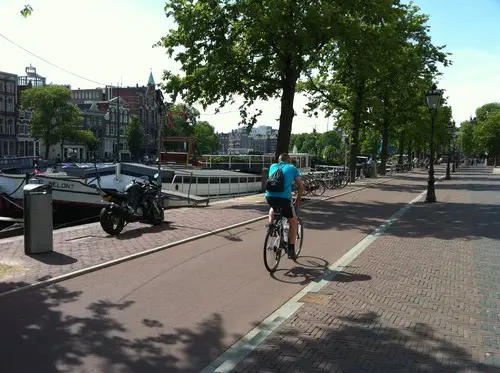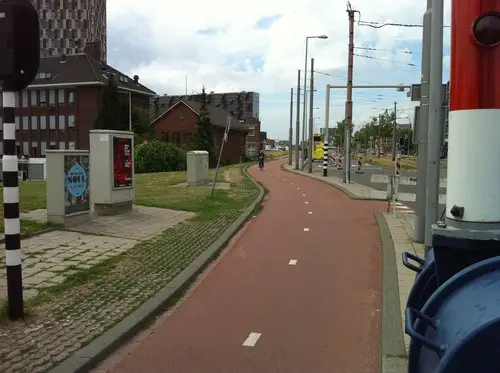London’s Underground rail network is hugely popular with the city’s residents, carrying over 3 million passengers a day between its 270 stations. However, its iconic buses are even more widely used, transporting 6 million Londoners around the city every day.
But with Britain’s new coalition government preparing comprehensive budget cuts, the future of London’s transport network is uncertain. The Mayor recently abolished plans for both a £70 million extension to the Docklands Light Railway and a tramline along Oxford Street – London’s popular shopping district – and the national government has repeatedly stated their desire to reduce the £16 billion budget of Crossrail – a high-frequency railway connecting East and Western outer London with the city centre.
Despite this, London is pushing forward with other ambitious plans for its transport network. Crossrail is continuing, and the Mayor has even launched a public consultation on plans for a cable car crossing the river Thames in East London. But funding for this project would need to be sourced privately, and considering the long-term nature of national government spending cuts, London is unlikely to see transport developments as expensive and ambitious as Crossrail for several years.
But to encourage continued use of public transport and make London a more sustainable city, a commitment to developing and improving the network will need to be made, albeit on a smaller budget. Thankfully for London, one potential solution to this dilemma is already endorsed by 6 million Londoners every day – the bus.
Considering the current economic climate, there are real reasons for increased political support of bus-based transport. Since it uses existing infrastructure – the road – the economic and environmental cost of implementing, modifying and maintaining bus networks is less than their train-based equivalents. Bus routes can also be introduced more quickly, and offer flexibilities of movement that track-based travel cannot.
Rail has advantages over the bus, being able to carry more passengers, therefore taking more cars off the road. However, the logistics of routing a train track through a city centre leads to complexities that increase cost, energy used in construction, and time involved.
But despite the benefits and heavy demand from residents, London’s leaders are sending out mixed messages regarding their support of the bus network. In January, fares were increased by a staggering 20 per cent. With budget cuts of up to 40 per cent being demanded of the Department for Transport, and a government subsidy reimbursing fuel duty paid by bus operators likely to be scrapped, further fare increases are almost inevitable.
Yet at the same time, the city is implementing progressive technologies within its buses and making plans for the future. Since 2005, hydrogen fuel cell buses have been steadily introduced to the network, offering emission-free transport with a view to creating a less polluted city. And almost as soon as he was elected in 2008, Mayor Boris Johnson announced a competition to design the next generation of London’s classic Routemaster bus.
But these developments alone are not enough. To address the city’s budgetary demands, and give people a reason to leave the car at home – or not have a car at all – London’s bus network needs to be transformed into a high-speed, super-efficient form of its current self.
And London is in a good position to create this change, having already implemented technologies designed to improve the flow of its bus network.
London operates an electronic ticketing scheme known as ‘Oyster’. These cards can be topped up with credit and allow access to public transport simply by touching a sensor, deducting the necessary amount for your journey. The rates are heavily discounted compared to cash fares, and 90 per cent of all bus trips are made using this system. Residents over 60 years old still need to ‘touch in’ with their Oyster cards, but travel is provided free of charge.
For those not using Oyster, tickets must be purchased in advance when boarding a bus in Central London; outside the centre, tickets can be purchased from the bus driver. To reduce time wasted by a minority of passengers fumbling for fares, the advance-purchase system needs to be implemented throughout greater London, increasing efficiency for all residents.
A stronger network of bus lanes is also required. Whilst there are many bus lanes leading to central London, in the city itself many roads are shared, delaying buses considerably. London needs to introduce bus lanes comprehensively throughout its centre, becoming a city which truly prioritises public transportation needs.
London has made efforts to improve the accessibility of its bus network by introducing buses that lower their entrances to pavement level. But by implementing highly precise optical guidance technologies which take over from the bus driver when pulling up at bus stops, it would be possible to create an entire bus network easily accessible to wheelchairs and the less able-bodied.
Improved communication is also vital to the improvement of the city’s buses. Technologies exist that allow buses to communicate with traffic lights, delaying them from turning red when a bus approaches, therefore reducing average journey times.
It is also possible to digitally monitor how full buses are, and display this information at bus stops. This shows passengers the capacity of buses before they arrive, allowing them to make informed judgements about the best route home, and the data can be used by bus companies to better plan for the network’s needs. This system could also be integrated into smartphone applications, offering travellers easy access to up-to-the-minute information about their bus network.
In the London of 2010, budgets are tight, bus ridership is at an all-time high, and environmental considerations are a priority. In the London of the future, a highly efficient, environmentally friendly bus service that prioritises the communal needs of those on-board could be fully integrated within the city. But for this to happen, London needs to realise how vital its bus network is, and begin radically modernising the way it operates.
Photo: E01


